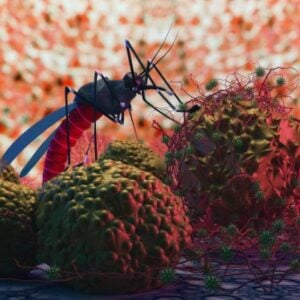The Pan American Health Organization (PAHO) has emphasized the urgent need to strengthen surveillance, clinical management, and vector control to combat localized chikungunya outbreaks and the ongoing circulation of the Oropouche virus (OROV) across countries in the Americas. The co-circulation of these and other arboviruses raises the risk of outbreaks, severe health complications, and fatalities, particularly among vulnerable populations.
According to PAHO’s recent epidemiological alert, the largest chikungunya outbreaks in 2025 have been concentrated in South America, especially in Bolivia, Brazil, and Paraguay, as well as parts of the Caribbean. These outbreaks involve the Asian and East/Central/South African (ECSA) genotypes, signaling a shift in the virus’s behavior since 2014. Additional cases in the Indian Ocean region, Europe, and Asia increase the risk of the virus spreading to new regions with favorable conditions for transmission.
By August 9, 2025, fourteen countries reported a total of 212,029 suspected chikungunya cases and 110 deaths, with over 97% of cases occurring in South America. Although these figures represent a decline compared to 2024, when over 431,000 cases and 245 deaths were recorded, localized outbreaks remain a concern. Concurrently, over 12,700 confirmed Oropouche cases have been documented in eleven countries during the first seven months of 2025, including autochthonous transmission in Brazil, Colombia, Cuba, Panama, Peru, and Venezuela.
Chikungunya has a long history of circulation across Africa, Asia, and the Indian subcontinent and was first detected in Europe in 2007 before arriving in the Americas in 2013. Globally, more than 270,000 cases were recorded by mid-2025, with outbreaks reported in Senegal, France, India, China, and Réunion Island, where the 2024 outbreak resulted in over 47,500 confirmed cases. The Asian genotype was predominant regionally between 2014 and 2017, but the emergence of the ECSA genotype in several countries is concerning because its cocirculation with the Asian type may enhance viral adaptation and transmission.
Typically, chikungunya follows a seasonal pattern with cases rising during the rainy season in the Southern Hemisphere’s first half of the year, and increasing later in Central America, Mexico, and the Caribbean. However, these latter regions have seen minimal contribution to 2025’s cases so far. Meanwhile, Oropouche virus transmission, once mostly limited to parts of the Amazon, has spread to new areas in 2024 and 2025, highlighting the importance of enhanced surveillance using geospatial tools to monitor changes in vector and case distribution.
Chikungunya is transmitted primarily by the Aedes aegypti mosquito and causes symptoms such as high fever, rash, and severe joint and muscle pain, which can persist for months or years. Severe cases may involve shock or neurological complications, and vulnerable groups include children, older adults, pregnant individuals, and those with pre-existing health conditions. No specific treatment exists, so prevention focuses on avoiding mosquito bites.
Oropouche virus is mainly transmitted by the midge Culicoides paraensis, with potential involvement of the mosquito Culex quinquefasciatus. It causes fever, headache, muscle aches, and sometimes neurological symptoms, without available vaccines or specific antiviral treatments; care is symptomatic. Patients may experience relapses and neurological complications, underscoring the need for vigilant clinical monitoring.
PAHO recommends improving early case detection and eliminating mosquito breeding sites, especially in high-risk locations such as schools and healthcare facilities. It also stresses the importance of molecular diagnostics, such as PCR testing within the first five days of symptom onset, and training healthcare workers in managing acute and chronic cases. For Oropouche, clinicians should consider it when diagnosing dengue-like illnesses and remain alert for neurological complications.
Community engagement plays a critical role in reducing mosquito populations. Promoting the use of repellents, window screens, and multisectoral approaches is vital. Specific control measures for Culicoides paraensis include draining temporary water bodies, removing stagnant pools, and clearing vegetation around homes to reduce breeding sites and resting places for the vector.





